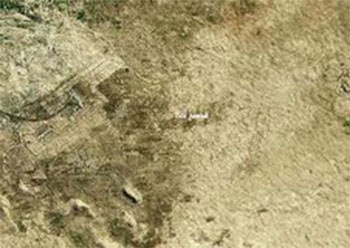Tell Aswad, is a large prehistoric, Neolithic Tell, about 5 hectares (540,000 sq ft) in size, located around 48 kilometres (30 mi) from Damascus, on a tributary of the Barada River at the eastern end of the village of Jdeidet el Khass
It was discovered in 1967 by Henri de Contenson who led excavations in 1971-1972.The Aswadian culture found by de Contenson was far too advanced for its calibrated dating than anything else found in the region, and the only example ever found of this culture. Further technical investigation of the lithic series by Frédéric Abbès revealed inconsistencies so it was recently decided to re-excavate in six seasons by the French Permanent Archaeological Mission El Kowm-Mureybet under the co-direction of Danielle Stordeur and Bassam Jamous between 2001-2006. Investigations into the materials found are ongoing at the National Museum of Damascus.
The fieldwork at Tell Aswad has changed the dating system at this site, abolishing the Aswadian period in the(Pre-Pottery Neolithic A) PPNA (9500-8700 cal BC). The latest research has split the PPNB period into 3; PPNB Ancien from 8700 to 8200 cal BC and the PPNB Moyen from 8200 to 7500 BC. PPNB Récent has been equated with Dunand’s “Néolithique ancien de Byblos”.
 The first PPNB period involved construction of massive earth architecture, layering soil with reeds to construct walls. The inhabitants of Tell Aswad invented the brick on site by modelling earth clods with beds of reeds, which they then formed raw bricks and eventually dried in later stages. Houses were round from beginning to the end of the settlement, elliptical or polygonal and were partly buried or laid. The orientation of the openings is most often to the East. This conforms with sites in the Southern Levant, whereas Northern Euphrates Valley sites generally display rectangular houses.
The first PPNB period involved construction of massive earth architecture, layering soil with reeds to construct walls. The inhabitants of Tell Aswad invented the brick on site by modelling earth clods with beds of reeds, which they then formed raw bricks and eventually dried in later stages. Houses were round from beginning to the end of the settlement, elliptical or polygonal and were partly buried or laid. The orientation of the openings is most often to the East. This conforms with sites in the Southern Levant, whereas Northern Euphrates Valley sites generally display rectangular houses.
Sourse: Archaeological Destinations
M.W

